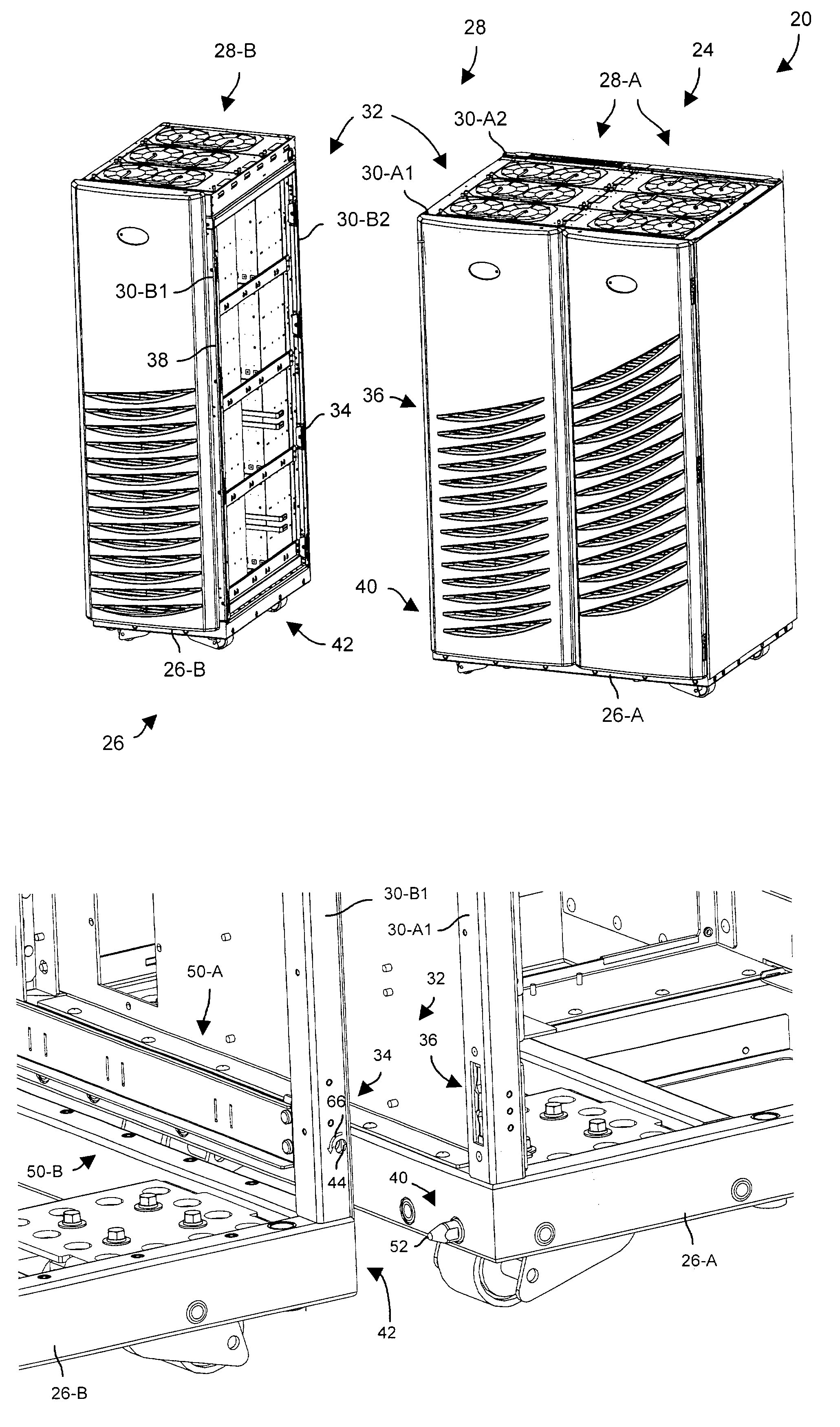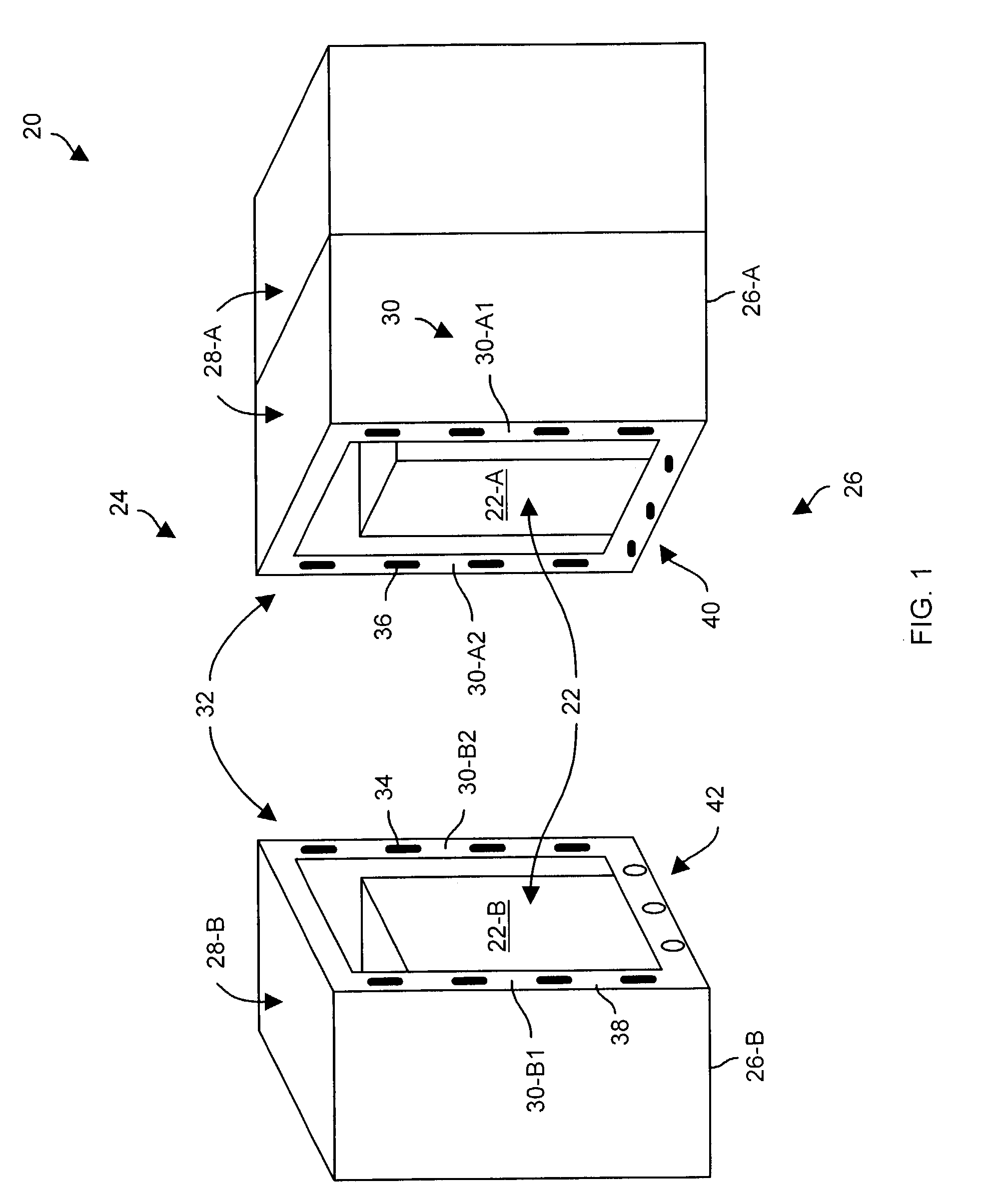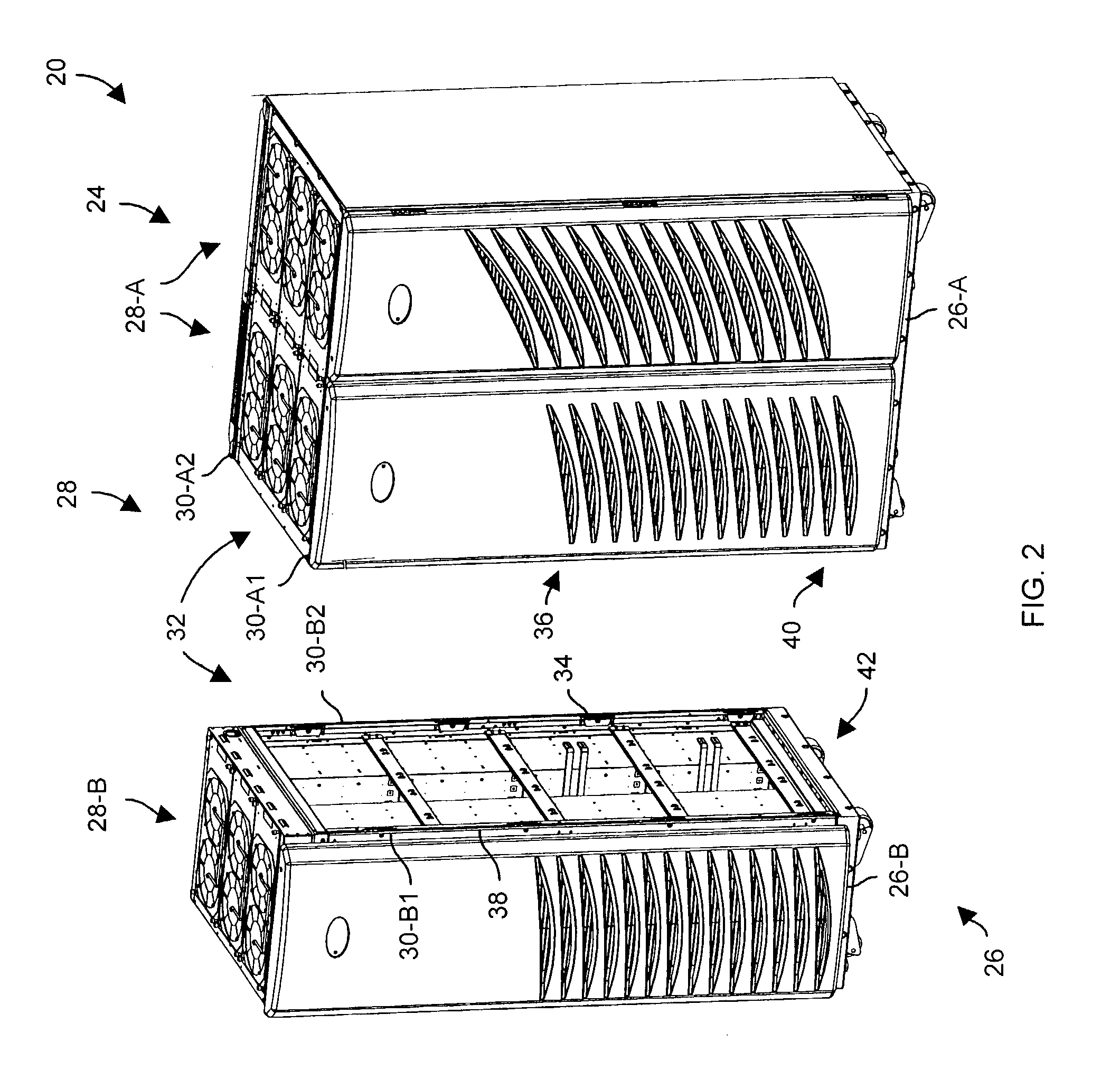Techniques for interconnecting electronic cabinet frames
a technology of electronic cabinet and frame, which is applied in the direction of electrical apparatus casing/cabinet/drawer, sectional furniture, support structure mounting, etc., can solve the problems of not being able to fit through a doorway or around a corner of a hallway, the manufacturer no longer has the option of subsequently separating the frame, and the equipment may exceed the internal volume provided. , to achieve the effect of preventing the frame from splaying, reducing the demand for larg
- Summary
- Abstract
- Description
- Claims
- Application Information
AI Technical Summary
Benefits of technology
Problems solved by technology
Method used
Image
Examples
Embodiment Construction
[0021]The invention is directed to techniques for interconnecting electronic cabinet frames using a set of latch subassemblies. Such subassemblies provide a user (e.g., a manufacturer, a customer, etc.) with flexibility to selectively interconnect and disconnect electronic cabinet frames without handling any nuts or bolts. Accordingly, the user has the capability to subsequently separate the electronic cabinet frames to accommodate certain situations (e.g., narrow facilities at an installation location, a reduced demand for large-scale configurations, etc.) as well as to avoid the risks associated with handling loose hardware (e.g., to avoid loosing nuts and bolts during shipping, dropping a nut or a bolt into electronic circuitry, etc.).
[0022]FIGS. 1–3 show an electronic system 20 which is suitable for use by the invention. FIG. 1 is a general block diagram of the electronic system 20 in an unconnected state. FIG. 2 is a perspective view of the electronic system 20 in the unconnect...
PUM
 Login to View More
Login to View More Abstract
Description
Claims
Application Information
 Login to View More
Login to View More - R&D
- Intellectual Property
- Life Sciences
- Materials
- Tech Scout
- Unparalleled Data Quality
- Higher Quality Content
- 60% Fewer Hallucinations
Browse by: Latest US Patents, China's latest patents, Technical Efficacy Thesaurus, Application Domain, Technology Topic, Popular Technical Reports.
© 2025 PatSnap. All rights reserved.Legal|Privacy policy|Modern Slavery Act Transparency Statement|Sitemap|About US| Contact US: help@patsnap.com



